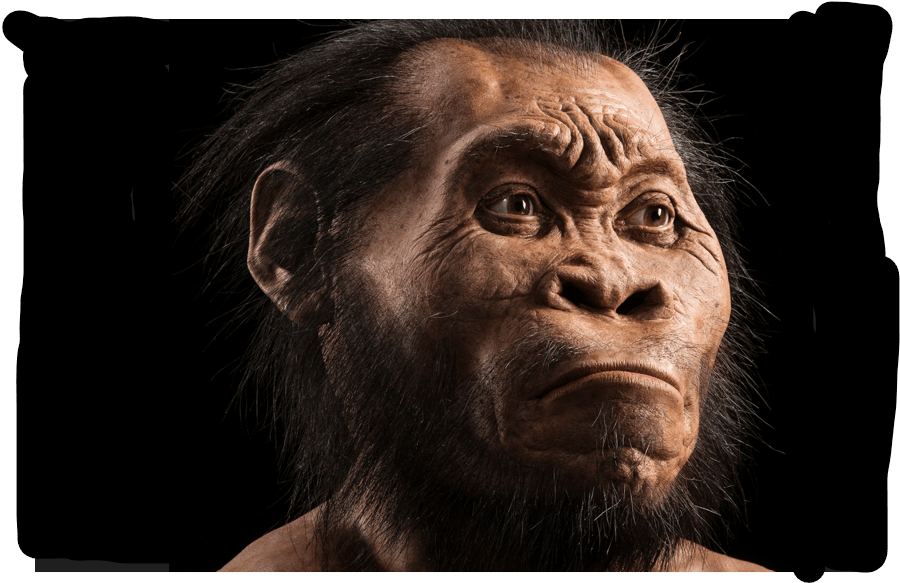Meet the Cousins
We are the only type of Human alive now but it wasn't always so. Through evidence proved by the fossil record and the study of the gene sequences of different modern day populations, we are able to catch glimpses of different types of human that used to exist. In some cases cousins that we co-existed with for hundreds of thousands of years, in other cases ancestors (archaic humans) .
A contemporary species to Homo Sapiens that evolved in Europe around 400kya. It was a stocky Hunter-Gatherer, probably preferring to ambush hunt their prey. The Neanderthal was sophisticated tool user who, towards the end of their existence, was producing art. Their demise at about 40kya, roughly coincides with the arrival of Homo Sapiens into Europe. It has been established that there was significant interbreeding between Sapiens and Neanderthals as up to 4% of modern European DNA can be traced to Neanderthals.

The picture opposite is the palaeontological equivalent of a wild arse guess. The only direct proof of their existence comes from DNA extracted from a finger bone, two small pieces of skull and some teeth. Yes despite the archaeological evidence of their very existence being so rare, they must have had a significant population which ranged over a considerable territory. Evidence for this is the fact that significant Denisovan DNA sequences (5%) can be found in large numbers of modern south east Asian human populations. Sometimes viewed as an Asian version of the Neanderthal.
The surprise arrival on the paleo scene, multiple skeletons were were found in a S. African cave system in 2013. They are unusual in that they combine very primitive features with modern human features. They were eventually dated to about 250 kya although given their features these are thought to have a long history. A subject of on-going debate and research, they are considered to represent evidence of the great variety in the Human family and an indication that there are more species to be discovered.
This robust predecessor for probably both the Neandertals and the Sapiens, it existed from around 600kya across Africa and Europe. There is some debate as to whether Hieldbergensis was actually a coherent species at all and the fossils attributed to it might be a mismatch of various pre-Neanderthal human types. Whether or not it is a single species Hieldbergensis represents a part of the human family that made up a second wave of the 'out of Africa' migration which occurred after the initial wave (homo erectus) and before Sapiens migrated into Europe in approximately 50kya.


